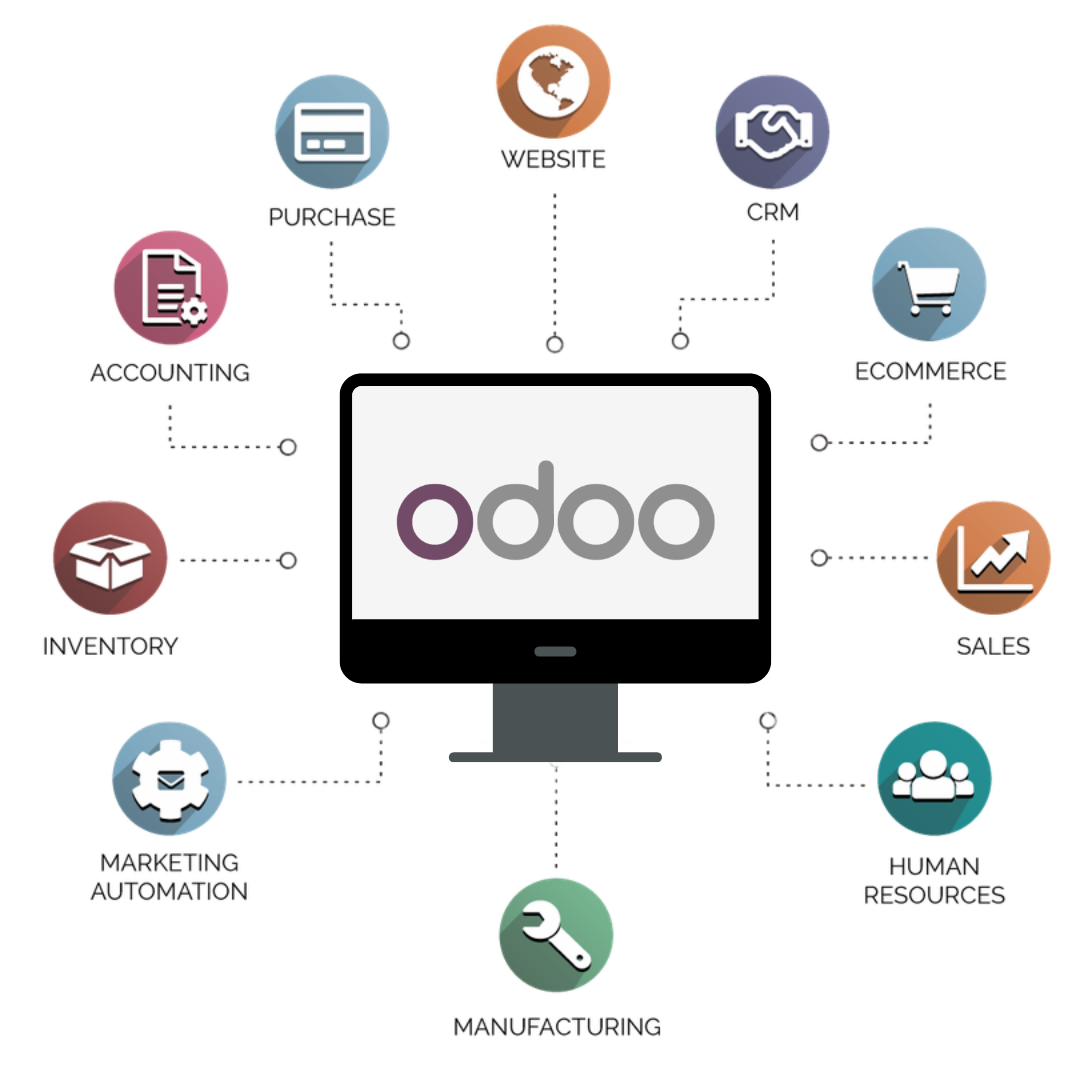About Odoo ( History of Odoo )
Early Beginnings: TinyERP
Odoo was founded in 2005 by Fabien Pinckaers, a Belgian entrepreneur with a vision to create an affordable and accessible ERP solution for small and medium-sized businesses (SMBs). The project began under the name “TinyERP,” reflecting its focus on providing a lightweight and user-friendly enterprise resource planning (ERP) system.
The initial versions of TinyERP were relatively simple but addressed key pain points for SMBs, such as managing sales, purchases, and inventory. The software’s open-source nature attracted early adopters and developers who appreciated the flexibility to customize the platform.
Transition to OpenERP
 In 2010, the software was rebranded as “OpenERP” to highlight its expanded capabilities and focus on being an open-source ERP system. During this phase, OpenERP gained significant traction and started to establish itself as a competitive alternative to proprietary ERP solutions like SAP and Microsoft Dynamics.
In 2010, the software was rebranded as “OpenERP” to highlight its expanded capabilities and focus on being an open-source ERP system. During this phase, OpenERP gained significant traction and started to establish itself as a competitive alternative to proprietary ERP solutions like SAP and Microsoft Dynamics.
Key milestones during the OpenERP era included:
- Community Growth: An active community of developers, partners, and contributors began forming around the software, enhancing its functionality and usability.
- Modular Architecture: OpenERP introduced a modular approach, allowing users to install only the apps they needed.
- Global Expansion: The company expanded its operations internationally, opening offices and forming partnerships in various regions.
The Birth of Odoo
In 2014, the company underwent another rebranding, adopting the name “Odoo.” The new name, short for “On Demand Open Object,” marked a significant shift in the company’s strategy. Odoo transitioned from being solely an ERP system to a comprehensive suite of business applications. This change reflected the growing diversity of the platform, which now included apps for CRM, e-commerce, human resources, and more.
Notable developments during this period included:
- Introduction of the Community and Enterprise Editions: Odoo introduced a dual-licensing model, offering a free Community Edition and a paid Enterprise Edition with advanced features and professional support.
- Marketplace for Apps: Odoo launched an app store, enabling third-party developers to create and sell custom modules. This significantly expanded the platform’s functionality.
Cloud Hosting: The company began offering cloud-hosted solutions, making it easier for businesses to adopt Odoo without investing in on-premises infrastructure.
Rapid Growth and Global Impact
Since its rebranding, Odoo has experienced exponential growth, becoming one of the most popular business management software solutions worldwide. Key achievements include:
- Massive User Base: Odoo now serves over 7 million users globally, ranging from startups to large enterprises.
- Robust Partner Network: The company has built a strong ecosystem of certified partners who provide implementation, customization, and support services.
- Continuous Innovation: Odoo releases major updates annually, introducing new features, enhancing performance, and improving user experience.
Recent Developments
In recent years, Odoo has focused on:
- AI Integration: Incorporating artificial intelligence to automate tasks such as invoice processing, data analysis, and predictive maintenance.
- Mobile Accessibility: Enhancing its mobile apps to provide seamless access to business tools on the go.
- Scalability: Optimizing the platform to handle the needs of larger enterprises while maintaining its appeal to SMBs.
Key Features Of Odoo

1. Modular Architecture
Odoo’s modular design allows businesses to pick and choose the apps they need. It offers over 40 core applications, with additional apps available in its marketplace. Key modules include:- CRM: Manage customer interactions and sales pipelines.
- Accounting: Automate bookkeeping, generate financial reports, and ensure compliance.
- Inventory Management: Optimize stock levels, track inventory, and manage supply chains.
- Human Resources: Handle recruitment, payroll, and employee data.
- E-commerce: Create and manage online stores with integrated payment gateways.
2. Open-Source and Enterprise Versions
Odoo is available in two main editions:- Community Edition: Free and open-source, ideal for businesses with basic needs.
- Enterprise Edition: Paid version with advanced features, professional support, and cloud hosting options.
3. Customization and Scalability
Odoo’s open-source nature makes it highly customizable. Businesses can tailor the platform to their unique workflows and scale it as they grow. Its API also enables integration with third-party applications.4. User-Friendly Interface
The platform’s modern and intuitive design makes it accessible for users without extensive technical knowledge. Odoo also offers mobile apps for Android and iOS, enabling on-the-go management.Benefits of Using Odoo
1. All-in-One Solution
By consolidating multiple business processes into a single platform, Odoo reduces the need for multiple software subscriptions and streamlines operations.
2. Cost-Effective
The Community Edition is free, and even the Enterprise Edition is competitively priced compared to other ERP solutions. This affordability makes it a popular choice among SMBs.
3. Flexibility
Whether you need a standalone CRM or a full-fledged ERP system, Odoo’s modular approach ensures you only pay for what you use.
4. Active Community Support
Odoo has a vibrant community of developers and users who contribute to its growth. This ensures regular updates, bug fixes, and a wealth of resources for troubleshooting.
Odoo stands out as a flexible, cost-effective, and feature-rich business management solution. Its modular design and open-source foundation make it an attractive option for businesses of all sizes. However, to fully leverage its potential, businesses should invest in proper planning, training, and customization. With continuous updates and a growing community, Odoo remains a top choice in the ERP and business software landscape.

